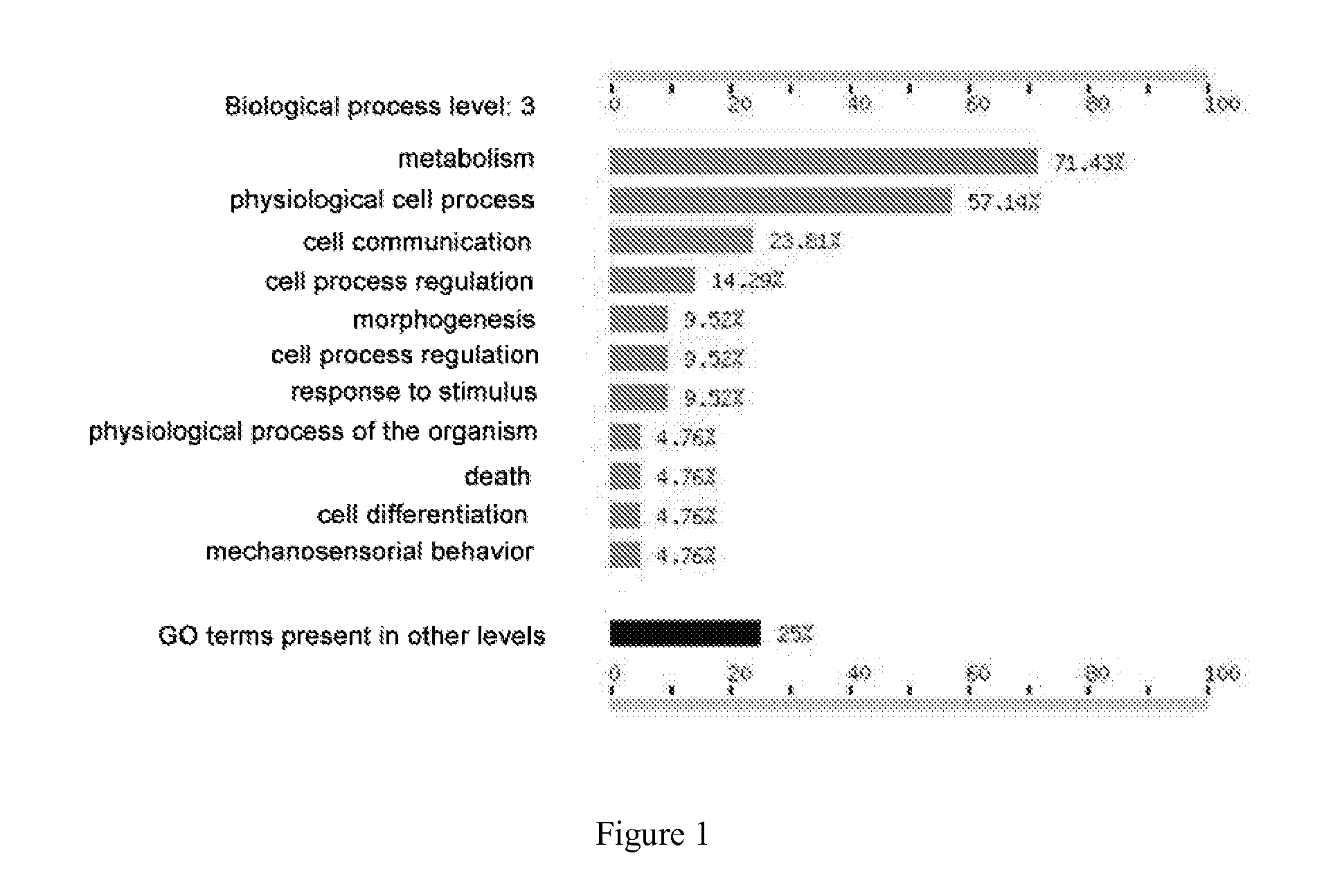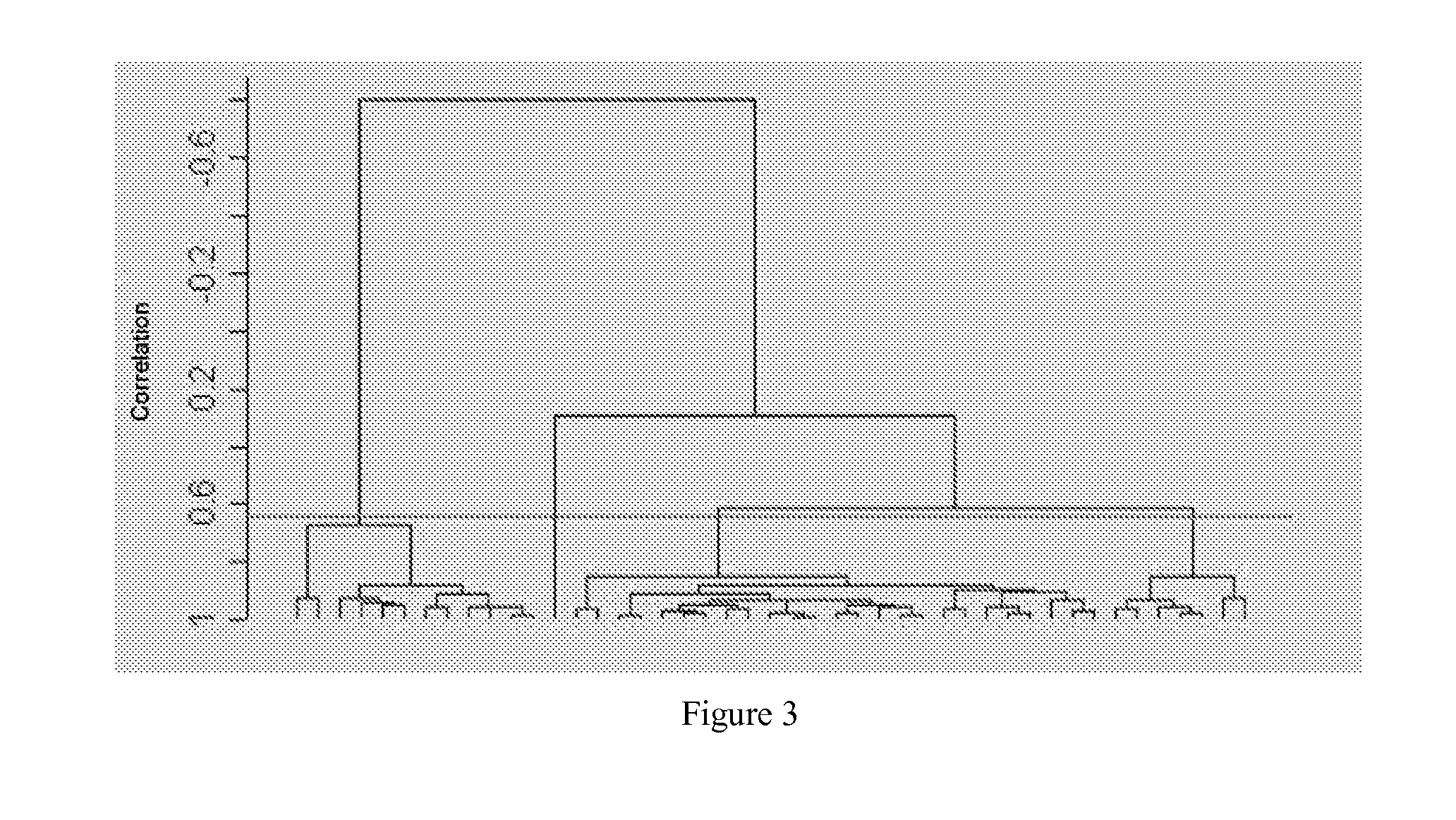Genetic markers for the prognosis of multiple sclerosis
- Summary
- Abstract
- Description
- Claims
- Application Information
AI Technical Summary
Benefits of technology
Problems solved by technology
Method used
Image
Examples
examples
Materials and Methods
[0175]1. Screening with DNA Chips
[0176]6 multiple sclerosis patients were recruited, 3 of them were diagnosed as having a bad prognosis and 3 as having a good prognosis, and 3 healthy controls without any history of any autoimmune disease. The prognosis of the patients was determined by means of clinical data associated with the progress of multiple sclerosis in studies of the natural history of multiple sclerosis as a first flare-up type, time until the second flare-up, number of flare-ups in the first 2 to 5 years and initial sequelae (Table 1).
TABLE 1Clinical markers of good and bad prognosisAssessment+ goodprognosis− badLiteratureClinical prognostic markersprognosisreferenceClinical signs of onset related to cerebellum,−1, 2, 5, 9,pyramidal tract or brainstem.6, 13, 17.Clinical signs of onset related to altered+1, 2, 9, 13senses or optic neuritis.Polysymptomatic clinical signs of onset−1, 8, 7(involvement of three or more functionalsystems)Time to 2nd flare-...
PUM
| Property | Measurement | Unit |
|---|---|---|
| Density | aaaaa | aaaaa |
| Level | aaaaa | aaaaa |
Abstract
Description
Claims
Application Information
 Login to View More
Login to View More - R&D
- Intellectual Property
- Life Sciences
- Materials
- Tech Scout
- Unparalleled Data Quality
- Higher Quality Content
- 60% Fewer Hallucinations
Browse by: Latest US Patents, China's latest patents, Technical Efficacy Thesaurus, Application Domain, Technology Topic, Popular Technical Reports.
© 2025 PatSnap. All rights reserved.Legal|Privacy policy|Modern Slavery Act Transparency Statement|Sitemap|About US| Contact US: help@patsnap.com



